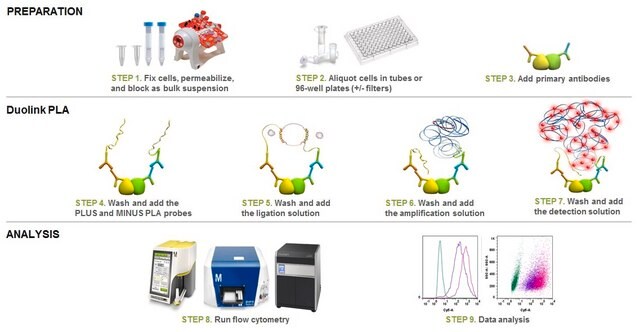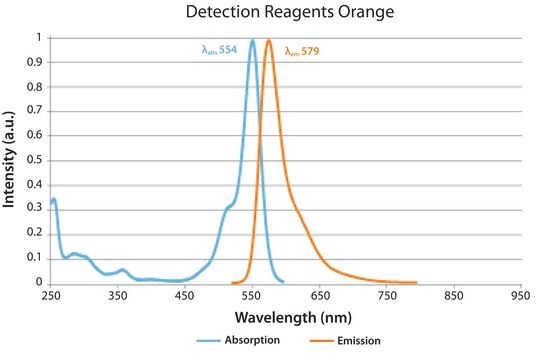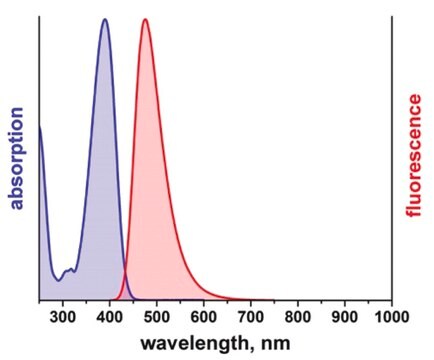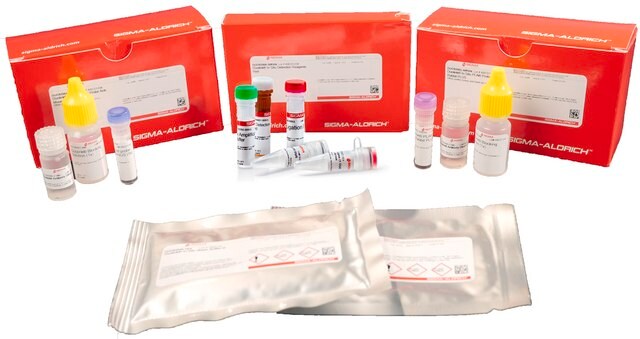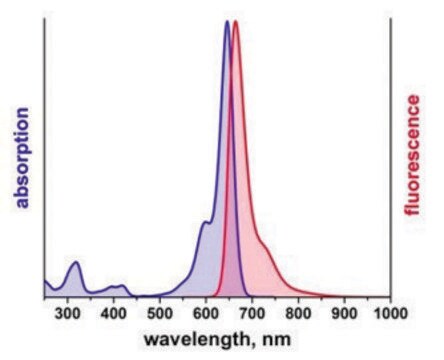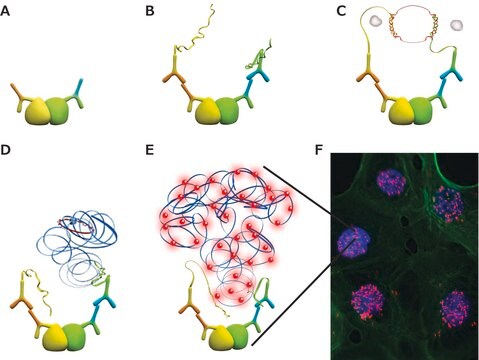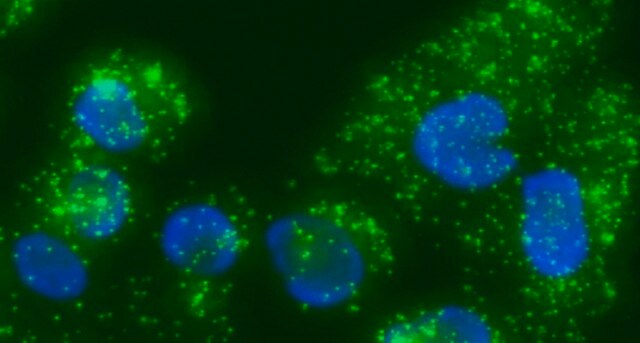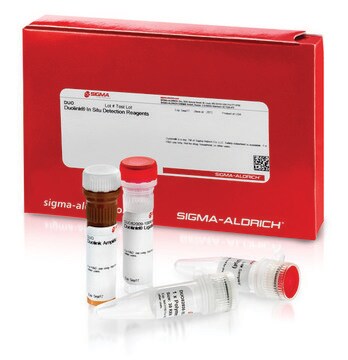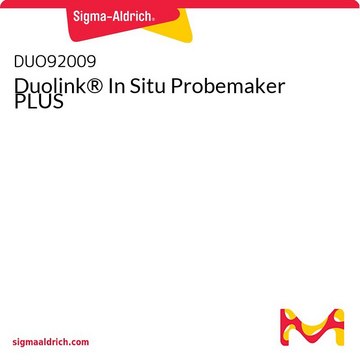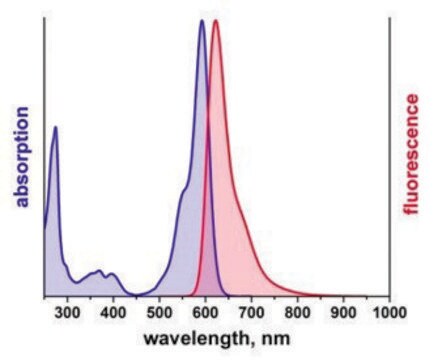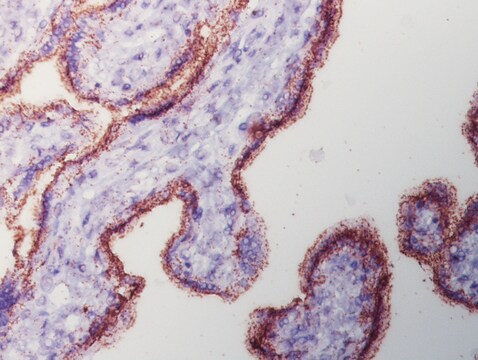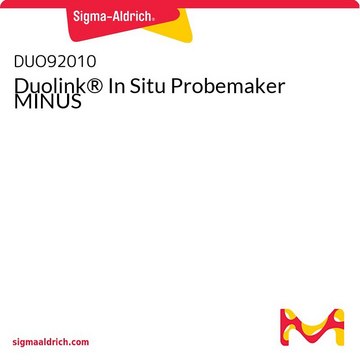推薦產品
產品線
Duolink®
技術
flow cytometry: suitable
immunofluorescence: suitable
proximity ligation assay: suitable
螢光
λex 594 nm; λem 624 nm
適合性
suitable for fluorescence
運輸包裝
dry ice
儲存溫度
−20°C
特異性
使用合适的激光器进行λex 594 nm激发
使用合适的滤光片进行λem 624 nm发射
應用
需要一抗。采用标准免疫荧光(IF)、免疫组化(IHC)或免疫细胞化学(ICC)测定法检测一抗(IgG类,单克隆或多克隆),确定最佳的固定、封闭和滴度条件。建议使用流动验证抗体。
了解有关我们的定制服务项目的更多信息,让我们为您工作,加快您的Duolink®项目进展
查看完整的Duolink®产品目录
Duolink® flowPLA检测试剂盒可通过流式细胞术灵敏地检测细胞群内蛋白质、蛋白质-蛋白质相互作用和蛋白质修饰。Duolink® flowPLA实验需要固定的悬浮细胞、两种可特异性识别目标蛋白的一抗、一对PLA探针(一个100RXN PLUS和一个100RXN MINUS)、洗涤缓冲液和Duolink® flowPLA检测试剂盒。flowPLA试剂盒具有5种不同荧光染料:紫色、红色、绿色、橙色或远红外。flowPLA试剂盒包含流式细胞术对结合的PLA探针进行扩增和检测所需的所有试剂。使用标准流式细胞术分析设备进行分析。使用者必须提供固定的细胞悬液、一抗和相应的OLA探针。
遵循Duolink® PLA流式细胞术方案使用本产品。
请访问我们的Duolink® PLA流式细胞术页面,了解如何运行Duolink®流式实验、应用程序、故障排除等。
应用说明
需要一抗。采用标准免疫荧光(IF)、免疫组化(IHC)或免疫细胞化学(ICC)测定法检测一抗(IgG类,单克隆或多克隆),确定最佳的固定、封闭和滴度条件。推荐经流式验证的抗体。
请让我们助您完成工作,了解有关我们的定制服务计划的更多信息,加速您的Duolink®项目
查看完整的Duolink®产品列表
特點和優勢
- 采用流式细胞仪分析蛋白质与蛋白质的相互作用
- 邻近连接法分析细胞群
- 通过滚环扩增提高对低丰度靶标的灵敏度
- 不需要过表达或基因操纵
- 可进行相对量化
- 可与任何流式细胞仪配合使用
- 易于遵循灵活方案
- 结果可直接发表
成分
- 5x检测溶液 - 红色(DUO84001)
- 5x连接缓冲液(DUO82009)
- 5x扩增缓冲液(DUO82050)
- 连接酶(1U/μL)
- 聚合酶(10U/μL)
有关更多信息,参见数据表。
法律資訊
客戶也查看了
文章
Considerations for proper experimental design, preparation and execution of the Duolink® PLA for flow cytometry protocol.
Traditional flow cytometry has been limited in the ability to detect protein-protein interactions and low abundant proteins events — until now. We have combined Duolink® Proximity Ligation Assay (PLA) with flow cytometry in a convenient kit, making the analysis of protein-protein interactions with flow cytometry readouts a reality.
General tips and tricks for proper experiment execution, aid in identifying potential problems, and provide solutions to ensure a successful Duolink® PLA experiment for flow cytometry.
Global Trade Item Number
| 庫存單位 | GTIN |
|---|---|
| DUO94001-40TST | 4061835515813 |
我們的科學家團隊在所有研究領域都有豐富的經驗,包括生命科學、材料科學、化學合成、色譜、分析等.
聯絡技術服務